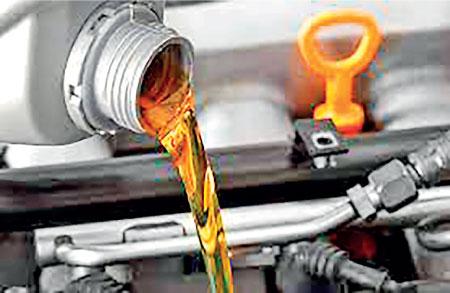Reply To:
Name - Reply Comment
 Sri Lanka’s lubricant consumption fell to a 13-year low in 2022, amid the severe forex crunch, which snowballed into a full-blown economic crisis, marked by hours-long power cuts, massive fuel shortages and runaway inflation.
Sri Lanka’s lubricant consumption fell to a 13-year low in 2022, amid the severe forex crunch, which snowballed into a full-blown economic crisis, marked by hours-long power cuts, massive fuel shortages and runaway inflation.
According to the statistics released by the lubricant industry shadow regulator, the Public Utilities Commission of Sri Lanka, lubricant sales volumes plummeted by 25 percent year-on-year (YoY) to 50,742.38 kilo litres in 2022, the lowest since 2009. Around 40 percent of the sales volumes or 20,578.64 kilo litres were recorded in the first quarter, before the country’s economy fell into a deep crisis and the sales volumes declined throughout the
year afterwards.
Lubricant sales recorded a 46 percent contraction in the second quarter over the first quarter and the third quarter recorded a 15 percent decline from the second quarter.
In the fourth quarter, there was a marginal growth in sales volumes over the third quarter but on a YoY basis, sales fell 42 percent to 7,035.18
kilo litres.
Despite a considerable drop in volumes, Chevron Lubricants was able to increase its market share to 48.43 percent, from 41.65 percent a year ago. However, the sales volumes in 2022 fell to 24,575.47 kilo litres, from 28,327.64 kilo litres a year ago.
Chevron’s market share jumped to 53.84 percent in the first quarter of 2022, surpassing the 50 percent threshold for the first time in nine years. However, the company could not hold on to it, as its market share gradually declined during the rest of the year, along with the
sales volumes.
Meanwhile, Indian Oil Corporation (IOC) was also able to increase its market share to 24.17 percent in 2022, with a sales volume of 12,266.16 kilo litres, recording a marginal drop in sales volumes compared to the
other players.
In addition, IOC was able to increase its market share to 27.80 percent in the fourth quarter, compared to the 20.05 percent market share it held in the
first quarter.
ExxonMobil Asia Pacific Pte. Limited emerged as the third largest lube player, with a 6.91 percent market share in 2022, replacing Laugfs Holdings Limited. Laugfs’ market share fell to 4.79 percent in 2022, from 7.68 percent in 2021.
Toyota Tsusho Corporation and Valvoline LLC became the fourth and fifth largest players, with 3.27 percent and 2 percent market
shares, respectively.
During the year, state-owned Ceylon Petroleum Corporation saw its market share plummeting to 1.75 percent, from 5.57 percent in 2021.
Meanwhile, several new players, including Apar Industries Limited, Liqui Moly GmbH, Lubrex FZC, Lukoil Marine Lubricants DMCC, Technolube L.L.C and Tide Water Oil Company (India) Limited, commenced lube sales during 2022.
Among them, only Lukoil Marine Lubricants DMCC and Apar industries Limited were able to generate sales exceeding 0.25 percent market share during the year.
Chevron Lubricants Lanka PLC Managing Director Bertram Paul in the company’s latest annual report noted that the competition in the local lubricant market was set to intensify with the government calling for a fresh licensing round early this year, to allow more new plays enter
the market.
“At an industry level, the further liberalisation of the lubricant industry, with the Power and Energy Ministry calling for applications from parties interested in the importation and manufacture of lubricants and greases, will further intensify competition,” he said.“The outlook for 2023 is mixed. The steep increase in personal income tax is expected to reduce the disposable income for middle-class consumers, while the steep increase in electricity tariffs is likely to further,”
he added.